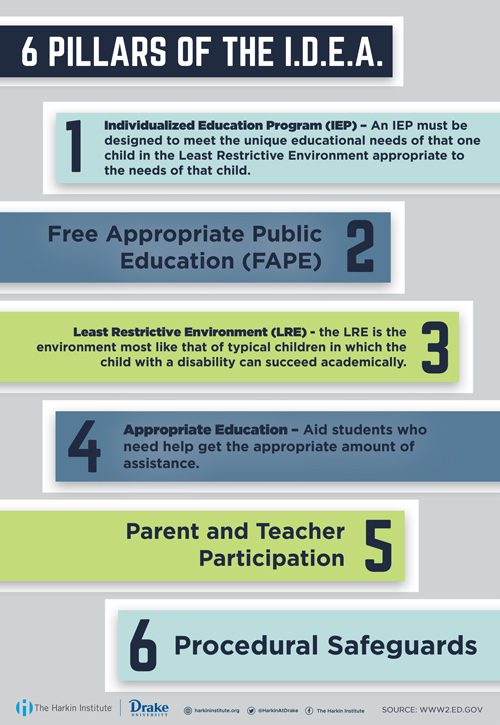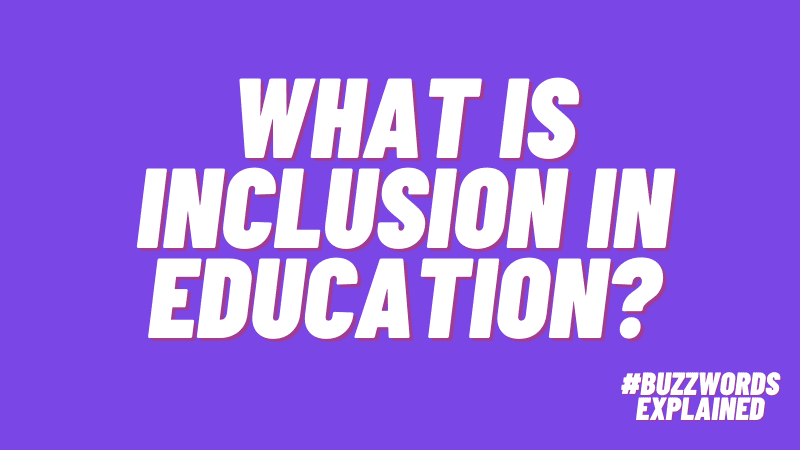If you’ve spent time in a classroom as a teacher or a parent, you’ve probably heard the term “inclusion.” But what exactly is inclusion in education, and what does it mean for teachers and students?
What is inclusion in education?
Specifically, inclusion in education refers to ensuring students with physical, behavioral, or learning disabilities are integrated into general education classrooms as much as possible. It also means providing them the support and accommodations they need to succeed alongside their peers.
In the early years of American education, those with disabilities often didn’t receive any education at all. Eventually, there was a push to provide these students with an education, but it was usually in special schools or special classrooms, segregated from other students. People felt these students’ special needs could only be met if they were kept separate from the general student population. Some also didn’t want them mixing with what they called “normal” children.
Not surprisingly, the stigma attached to “special schools” and “special classrooms” created a divide, one that lasted into adulthood. Many communities didn’t (or weren’t able to) provide meaningful education for these students. If parents couldn’t afford private education, these children simply didn’t attend school at all. In 1970, only 20 percent of children with disabilities attended school.
But in 1975, the Education for All Handicapped Children Act changed things. It required a free, appropriate education for all children. It provided funding to help schools accommodate those with disabilities, and created concepts like IEPs and other tools to help these students succeed.
IDEA

Source: The Harkin Institute
In 1990, Congress reauthorized the legislation, changing its name to the Individuals With Disabilities Education Act (IDEA), which it is still known as today. The act covers children from birth to age 21. IDEA requires all public schools to provide the following:
- Free Appropriate Public Education (FAPE): Students, regardless of disability, must all receive access to the same general education.
- Least Restrictive Environment (LRE): This is the portion of IDEA that pertains specifically to inclusion. It states that students with disabilities must be included in traditional classrooms to the maximum extent possible.
- Appropriate Evaluation: Schools must provide an evaluation following specific standards, to ensure students are properly placed and regularly assessed.
- Individualized Education Program (IEP): Every student identified as falling under IDEA receives an IEP, which lays out the accommodations the student needs to succeed in the classroom.
- Parent and Teacher Participation: IDEA sets out certain requirements for how schools must communicate and cooperate with parents.
- Procedural Safeguards: Parents have the right to review educational records, take an active part in all meetings regarding educational decisions, and receive notice before any changes are made.
What does “least-restrictive” mean?
IDEA requires students with disabilities to be accommodated in the general classroom “to the maximum extent possible.” To determine this, schools answer two questions:
- Can an appropriate education in the general education classroom with the use of supplementary aids and services be achieved satisfactorily?
- If a student is placed in a more restrictive setting, is the student “integrated” to the “maximum extent appropriate”?
Ultimately, the goal of inclusion in education is to default to providing an education in a general classroom, using the standard curriculum, whenever possible. For some students, this will require special accommodations, including but not limited to:
- Inclusion specialists, teacher aides, or paraeducators who co-teach or spend time in general classrooms to support students with special needs
- Classroom accommodations like changes in seating or access to specialized devices or materials
In some cases, it may not be possible to meet certain needs in the general classroom. When this is the case, schools must make every effort to meet those needs before determining that the student must spend part or all of their educational day in a different setting.
Inclusion and IEPs
IDEA outlined 13 areas of special education that require the creation and use of Individualized Education Plans (IEP). An IEP serves two purposes: to set reasonable measurable goals for the child, and to specify the services the school will provide. Schools and teachers work with parents and experts to create a plan specific to each qualifying student. These plans include the accommodations needed in the general classroom for the student to succeed. Learn more about IEPs here.
What does a good inclusive classroom look like?
It’s rarely possible to provide a quality education for students with special needs unless you have more than one educator in the classroom. These students often require one-on-one support, whether throughout the day or during certain activities. Inclusion classrooms might have:
- Co-teachers, who split their time between general instruction and student support
- Special Educators (SPED), who may “push in” or “pull out” as needed (see below)
- Paraeducators, also known as teacher aides, who support students one-on-one or in small groups
- Interpreters, for students who are blind or deaf
Inclusive classrooms may also provide support for students with specialized equipment or spaces, such as text-to-speech/speech-to-text programs, pencil grips, calm-down corners, etc. Discover more about inclusive classrooms here.
Push In/Pull Out
Educators can provide special needs support in one of two ways. They can “push in,” meaning they work with students as needed in the general classroom. Or they can “pull out,” taking one or more students at a time to work together in a separate location. There are pros and cons to each.
Pushing in can be done by SPED teachers or aides, general classroom teachers, interpreters, speech or occupational therapists, and more. They might work quietly side-by-side with a student or provide general support as needed during group activities.
In a very quiet classroom, push-in support can sometimes be distracting to other students. A student may also need specialized instruction, more time than the general schedule allows, or a safe space to deal with behavior issues. In these cases, pulling out makes more sense. This is usually done by SPED teachers or aides, counselors, or speech or occupational therapists.
Students may have scheduled sessions, or use the accommodations only when needed. Educators usually try to limit the amount of “pull out” time, since that defeats the purpose of an inclusionary classroom. Learn more about “push-in/pull-out services” here.
How does inclusion benefit all students?

Source: ViewSonic
During the 1990s, schools began to place more emphasis on true inclusion. In other words, students with disabilities didn’t just attend public school only to be segregated into their own classroom. Rather, these students finally found their place in the general classroom, supported by specialists and paraeducators as needed. They received the same access to the curriculum, as well as the ability to integrate socially.
According to one report summarizing multiple studies, “Included students develop stronger skills in reading and mathematics, have higher rates of attendance, are less likely to have behavioral problems, and are more likely to complete secondary school than students who have not been included.”
What about the students in the classroom without disabilities? The same report states, “In most cases, being educated alongside a student with a disability does not lead to adverse effects for non-disabled children. On the contrary, some research indicates that non-disabled students who are educated in inclusive classrooms hold less prejudicial views and are more accepting of people who are different from themselves.”
When students with disabilities aren’t hidden away, other children see them from a young age and learn that people of all abilities can and should learn, play, and live in the same world.
What are the challenges of inclusion in education?
Proper inclusion requires extensive cooperation between teachers, parents, and administration.
- Admin must work to provide the right staff to support student needs, and find the funding to cover any specialized equipment or materials. They must also help teachers manage behavior challenges and work with parents.
- Teachers bear the greatest burden, since they must work to support all the students in their classroom including those with special needs. They also need to communicate with parents, asking for support and providing regular updates.
- Parents are a vital link in the chain, but not all students have parents or guardians who are willing or able to be involved in their child’s education. This can especially be a problem for students with behavioral disabilities.
Behavior issues are one of the biggest problems in inclusion classrooms, especially when there aren’t enough teachers or aides, or when parents or administration are unable or unwilling to get involved. Some special needs students also face bullying or social isolation, which adults in the classroom may or may not be aware of.
Inclusion in Education Resources
There’s a lot more to know about inclusion in education. Try these resources for more information.
Online
- Individuals With Disabilities Education Act, U.S. Department of Education
- Inclusive Schools Network
- National Inclusion Project
Books
- Inclusion in Action: Practical Strategies to Modify Your Curriculum (Eredics, 2018)
- The Inclusion Toolbox: Strategies and Techniques for All Teachers (Kurth/Gross, 2014)
- Inclusion Strategies That Work! Research-Based Methods for the Classroom (Karten, 2015)
Looking for more? Check out Teacher Questions About Inclusive Classrooms Answered.
Plus, join the WeAreTeachers HELPLINE group on Facebook to ask for advice, exchange ideas, and chat with other educators!


